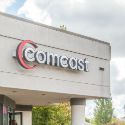Comcast Will Go Wireless in 2017
Comcast will take its first step toward becoming a wireless carrier in 2017 with a network that combines Verizon cellular assets and Comcast's own WiFi hotspots.

Comcast announced today that it will launch a new wireless service in 2017, taking advantage of an MVNO agreement signed with Verizon in 2012 and the cable company's own footprint of WiFi hotspots around the country.
Comcast Corp. (Nasdaq: CMCSA, CMCSK)'s wireless plans have been the subject of speculation since the operator activated its MVNO agreement with Verizon Communications Inc. (NYSE: VZ) last year, but today's announcement was still a surprise given the specificity on timing and the confirmation that the wireless offering will combine cellular and WiFi connectivity. CEO Brian Roberts shared the news at the Goldman Sachs Communacopia Conference, stating that Comcast will launch the integrated wireless product around the middle of next year.
Comcast has 28 million customers, and at least 70-80% of them buy a multi-package bundle, Roberts said, describing those multi-package bundle buyers as Comcast's "very best customers." Wireless access will give Comcast the ability to sell even more services to those customers.
Roberts said he expects the wireless product will produce "reduced churn, with more stickiness, with better satisfaction, more product purchasing from us," as it combines Verizon's wireless product with Comcast's 15 million WiFi hotspots.
The cable industry can cite a litany of wireless failures over the years with names like Freewheel, Clearwire and Pivot. However, Comcast is approaching its latest wireless attempt with great care and with some significant new assets in hand. While the vast majority of the company's 15 million or so hotspots are home hotspots -- where a home router supports both a private network ID and a public one for guests -- tens if not hundreds of thousands are public hotspots with many users, proving that Comcast can operate a wireless hotspot network at scale.
Equally important, Comcast's far-flung wireline footprint means the company can continue to add wireless access points with relative ease. The local backhaul capacity provided by fixed-line networks is the most expensive part of trying to extend wireless service, and Comcast already has that foundation in place. (See Analysts More Than Bullish on Comcast MVNO.)
For now, it appears that Comcast will rely entirely on Verizon's network to fill out the cellular portion of its wireless offering, but importantly, Comcast has also confirmed that it's participating in the latest spectrum auction hosted by the Federal Communications Commission (FCC) . The cable company could ultimately supplement the Verizon network with its own spectrum holdings, or even gradually move away from the Verizon network entirely. (See Comcast May Be Lone MSO Wireless Bidder.)
Want to know more about cable's wireless ambitions? Check out our cable WiFi channel here on Light Reading.
There are still a number of questions to settle about Comcast's wireless service before it launches next year. Will there be automatic roaming between cellular and WiFi networks? What selection of phones will Comcast make available? Will Comcast partner with other cable companies including Charter Communications Inc. to further extend its WiFi footprint nationally?
As of today, Roberts says there are more than 100 people working on the initiative under the leadership of Greg Butz, who was promoted to president of Comcast Mobile in July. (See Comcast Could Be Your Next Mobile Provider.)
More to come in the months ahead.
Comcast's WiFi plans follows news Monday that the company is rolling out Netflix on the its X1 video platform. (See Comcast Binges on Netflix in New Beta.)
— Mari Silbey, Senior Editor, Cable/Video, Light Reading
About the Author(s)
You May Also Like




_International_Software_Products.jpeg?width=300&auto=webp&quality=80&disable=upscale)







